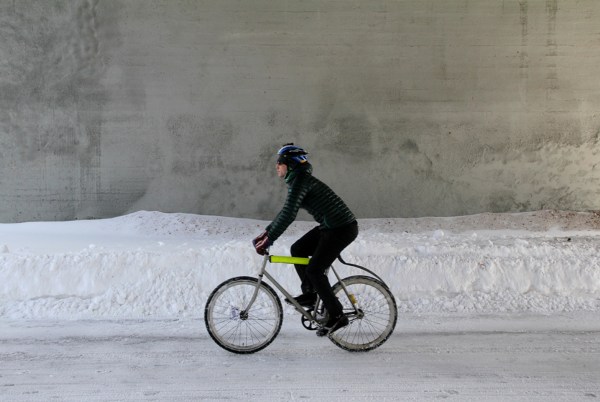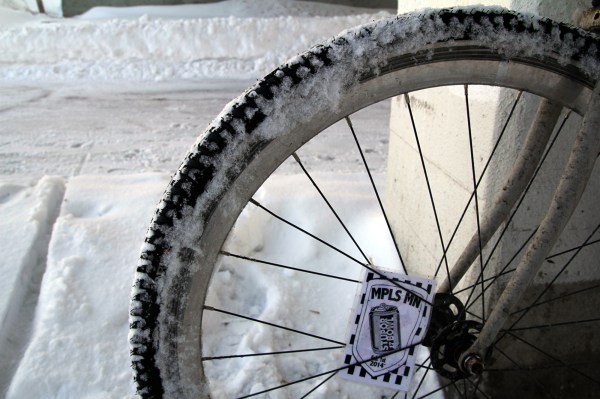Ice and compacted snow cover the city street, a canvas of ruts and potholes stretching north into a winter haze. It’s a Tuesday morning in Minneapolis, and I am halfway to work, mittens gripped on handlebars as a car swerves by.
Biking through the winter can be tough. But with the right attitude—and a requisite tolerance for some pain—you can keep pedaling no matter how much the mercury drops.
It’s been more than a decade since I started commuting by bike year-round. Truth is, it’s taken me about that long to dial my gear, clothing and riding skills enough to be confident in any weather. Here are a few things I have learned along the wintry way.
Winter Destroys Bikes
Your summer bike will get wrecked if you ride it through the icy months. Salt, sand, road spray, snow clogged in the gear cassette and coating every component—winter riding can be a mess. Rusty parts and general damage and decay can be rampant, especially if you don’t clean your bike often—like after almost every ride.
Dedicated Winter Ride
For all the above reasons—plus to make a bike more agreeable on ice and snow—I rebuild my winter bike each fall, switching out components, adding winter tires, and mounting lights and reflective hits. My bike the past two years has been a pared-down single-speed with studded tires and flat handlebars for a wide, controlling grip. (See a full breakdown of my current winter bike.)
Fat Bike Option
Fat bikes are the rage with many winter riders. The wide rubber lets you power through slush and “float” more when the snow on the road is deep. In truth, most U.S. cities are not snowy enough for fat bikes to be used to their full potential on roads. They are heavier and slower than other options if the streets are reasonably snow-free. On storm days, however, the fat riders will be faster than anyone on the road, including cars!
Stay Visible In Winter
Drivers are not looking for cyclists in the cold times of the year. Add to that blowing snow, icy windshields that block vision, and slippery roads. The result is a potentially treacherous situation for riders. My advice: Bike defensively (and smartly), but also make an effort to keep yourself visible. Use hand signals, ride in the lane (but not rudely), and use extra lights (see below).
Light Up
Decreased visibility and darker days—not to mention potential commutes in the low-sun hours, both morning and evening during short winter days—makes extra illumination essential. I mount a 500-lumen light on my helmet, its white beam cutting ahead on a street like a car headlight. On back, a mounted blinking red LED stays on my bike frame all winter. I often put a second blinker on my backpack to keep me doubly visible from the rear.

Reflection
In addition to lights, reflective materials are important. My winter bike has a foot-long top tube pad that’s made of a reflective material. When car headlights hit the tube it sparks and glows, making me more visible from the side. Backpacks and outerwear with reflective patches or piping are also a great add-on to keep you more visible in the dark.

Stay Safe, Keep A Positive Attitude
Cold fingers and toes, ice-encrusted beards, road spray on the back, an occasional tip-over crash at a patch of ice—I’m not going to lie, riding in the winter can hurt. It’s more dangerous than summer riding, too, so slow down and walk your bike where the road or path gets dicey. But try to keep smiling. I have embraced biking year-round, and the wintertime is no longer something I dread. My commute is often via paths, along a creek, around an urban lake, and onto one of Minneapolis’ well-known pedestrian paths, the Midtown Greenway. With the crisp air on my face, and a body warm from pedaling hard through snow, my daily trip feels like a mini expedition and is always a great way to start my day.
Photo credit: ©GearJunkie.com

